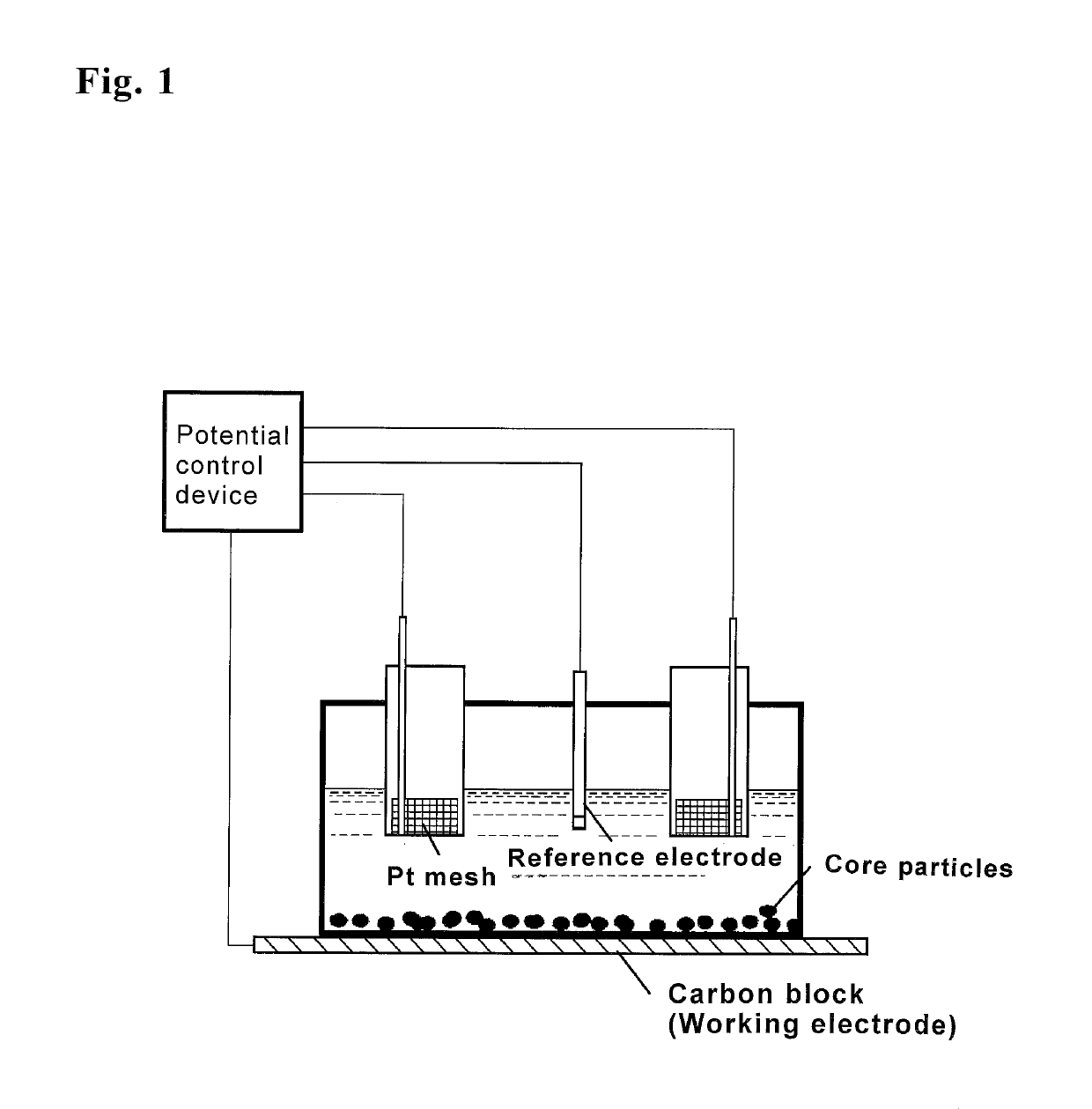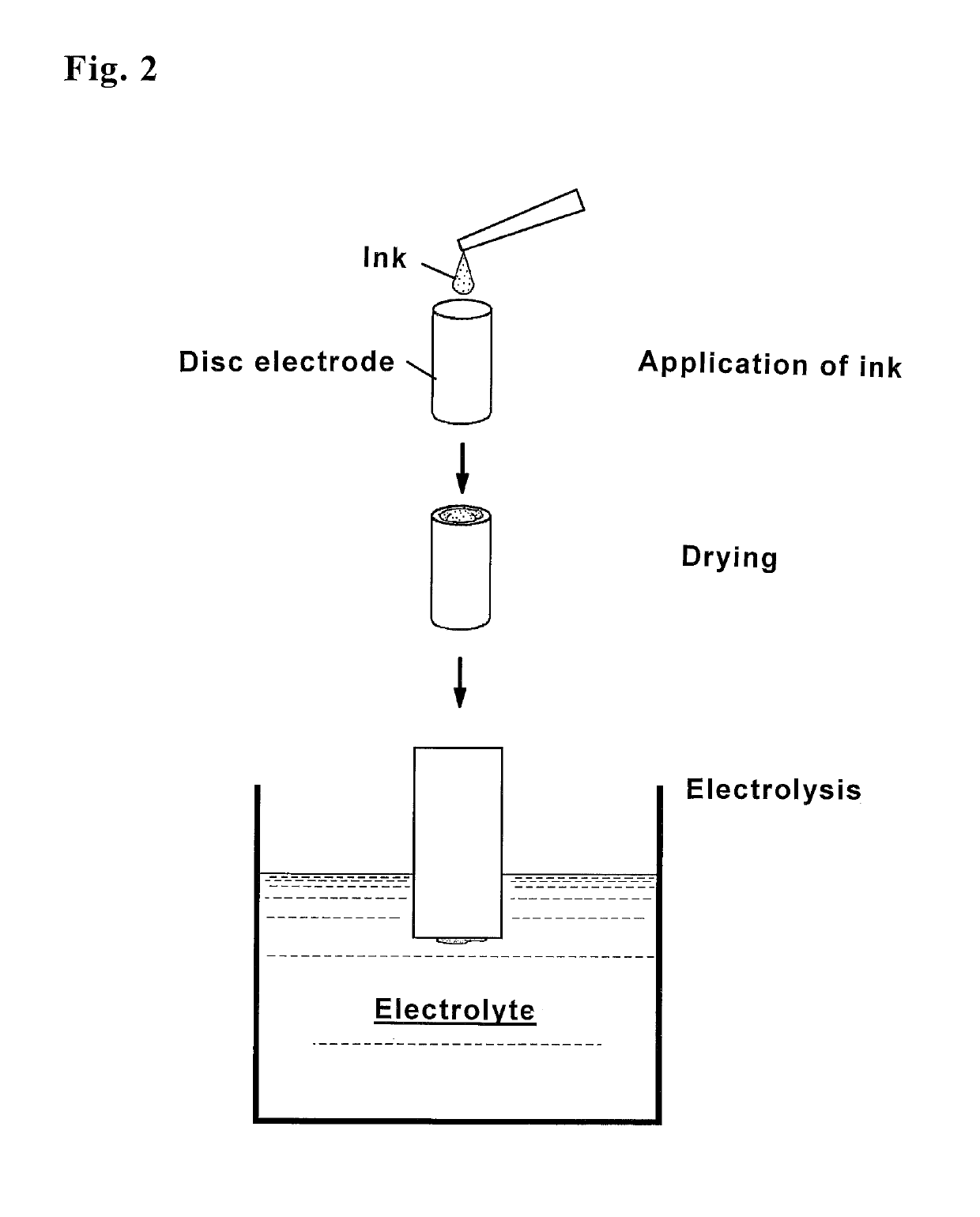Method for manufacturing catalyst having supported catalyst particles of core/shell structure
a technology of supporting catalyst particles and catalyst particles, which is applied in the direction of sustainable manufacturing/processing, cell components, physical/chemical process catalysts, etc., can solve the problems of significant influence of catalyst cost and thereby fuel cell cost, particularly high price of platinum, etc., and achieves excellent balance, efficient manufacturing, and enhanced throughput
- Summary
- Abstract
- Description
- Claims
- Application Information
AI Technical Summary
Benefits of technology
Problems solved by technology
Method used
Image
Examples
first embodiment
[0033]In this embodiment, a catalyst containing supported catalytic particle having a core / shell structure where palladium is employed as the core particle was manufactured, and then activity thereof was evaluated. At first, 35 g of carbon powder (trade name: Ketjen Black EC, specific surface area: 800 g / m3), which was to be the carrier of the catalyst, was immersed in a palladium chloride solution (amount of Pd, 15 g (0.028 mol)), then the solution was neutralized with sodium carbonate. The resultant material was subjected to a reduction treatment with sodium formate to produce carbon powder supporting a palladium particle which was to be the core particle.
[0034]Subsequently, the palladium particle surface was covered with a copper layer. The electrolysis apparatus used in the present embodiment is shown in FIG. 1. The electrolysis apparatus shown in FIG. 1 is equipped with a counter electrode tube having platinum mesh as a counter electrode and reference electrode inserted in an e...
second embodiment
[0044]In this embodiment, catalysts were manufactured while the amount of citric acid added in the displacement reaction step following the electrolytic treatment step was varied. Palladium-nickel alloy was employed as the core particle. The same carbon powder as used in the First Embodiment which was to be a carrier was immersed in a solution of palladium nitrate (amount of Pd, 53 g (0.50 mol)) and nickel nitrate (amount of Ni, 176 g (3.0 mol)), then the solution was neutralized with sodium hydroxide. Then, a particle comprising a palladium-nickel alloy was formed on the carbon powder by means of a heat treatment. Subsequently, this carrier was immersed in 0.5 M sulfuric acid (80° C.) to remove the nickel. Such formation of the palladium-nickel alloy particle and removal of the nickel are performed in order to form pores on the alloy particle surface due to elution of the nickel, thereby enhancing the surface area and activity thereof.
[0045]Then, copper was electrolytically deposit...
PUM
| Property | Measurement | Unit |
|---|---|---|
| particle diameter | aaaaa | aaaaa |
| particle diameter | aaaaa | aaaaa |
| time | aaaaa | aaaaa |
Abstract
Description
Claims
Application Information
 Login to View More
Login to View More - R&D
- Intellectual Property
- Life Sciences
- Materials
- Tech Scout
- Unparalleled Data Quality
- Higher Quality Content
- 60% Fewer Hallucinations
Browse by: Latest US Patents, China's latest patents, Technical Efficacy Thesaurus, Application Domain, Technology Topic, Popular Technical Reports.
© 2025 PatSnap. All rights reserved.Legal|Privacy policy|Modern Slavery Act Transparency Statement|Sitemap|About US| Contact US: help@patsnap.com


